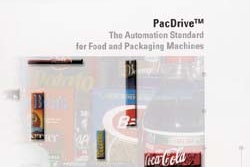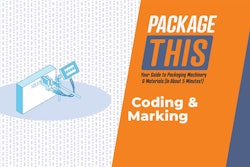The Consumer Product Safety Commission wants all oral over-the-counter medications to be in child-resistant packaging. Some already are, of course. But many are not. The CPSC proposed the rule last August. It would have to be finalized before a CR requirement becomes effective. However, it comes on the heels of a previous CPSC dictate forcing manufacturers of all OTC and prescription pharmaceuticals to put those products in CR packaging when they are supplied to individuals who are taking those medications at home as part of clinical trials. That requirement became effective on Nov. 1. Any new OTC CR edict would have a big impact on cough, cold and flu products sold as tablets or capsules in blister packs inside a rectangular carton or as suspension liquids inside bottles. All are sold in tamper-evident and tamper-resistant packaging. Some are sold in blister packs that are already child-resistant. These are what are called “peel-push” blisters, where the consumer has to peel back the paper backing on the blister before pushing the capsule through the foil lidding. Blisters that are sealed with a lidding material that can be broken by pushing the tablet or capsule through are not considered child-resistant, says Tim Enterline, an account executive with PCI Services, Inc., a Philadelphia pharmaceutical packager. This distinction annoys the Healthcare Compliance Packaging Council. In an analysis of CPSC poisoning data covering 17 years, HCPC found that unit-dose blisters and strip packs were rarely involved in child accidents. Most frequently, accidents occurred when a child was able to “jimmy-off” supposedly child-resistant caps. “At some point, CPSC needs to realize that safer packaging is being discriminated against under the current system,” says Peter Mayberry, HCPC executive director. In a proposed rule it put out for comment on Aug. 30, the CPSC listed 16 active ingredients currently found in OTC oral drugs that are not required to have CR packaging. The CPSC has authority over packaging for those products via the Poison Prevention Packaging Act. The CPSC has also used the PPPA to require CR packaging for all prescription drugs sold to consumers, unless a particular drug is the subject of an exemption. The 16 OTC actives were once only found in prescription medications but were subsequently switched to OTC sale. Six other actives switched to OTC were previously required to have CR packaging. These include ingredients such as ibuprofen. Of the 16, the CPSC says that concerns about toxicity have convinced it that four of them definitely need to have CR packaging. They are: pseudoephedrine HCL, pseudoephedrine sulfate, phenylpropanolamine (PPA) HCL and clemastine fumarate. These are typically found in cold, cough and flu products such as Sudafed® (Warner-Lambert), Tavist-D® (Novartis), Contact® (SmithKline Beecham) and Dimetapp® (Whitehall-Robins). Very few of the blister-pack versions of these and similar products appear to be in CR packaging, based on a check of drugstore shelves. The agency said it may well want to see five other OTC cough/cold actives in CR packaging because they are related in structure and activity to diphenhydramine, the active ingredient in Warner-Lambert’s Benadryl® that is currently subject to a CR requirement. Numerous suspensions in bottles contain these nine actives. For example, Robitussin Pediatric Cough and Cold® from Whitehall-Robins contains pseudoephedrine. It has a CR cap, though that is not disclosed on the outside carton or on the bottle itself, for that matter. Monte Bradford, director of manufacturing services for Whitehall-Robins (Madison, NJ), says many children’s OTC cough/cold medications are already in CR packaging, even though there might not be a federal requirement to that effect. Any type of push-down-and-twist cap is considered CR. The Comprehensive Methamphetamine Control Act of 1996 says that a company’s poorest-selling item did not have to be in CR packaging. However, there does have to be a consumer alert to that effect on the outer package. Drixoral® (Schering-Plough) Allergy Sinus/12-hour, which contains pseudoephedrine, says “This Package for Households Without Young Children” in a rectangular box on the package front. But if the CPSC goes forward, even that Drixoral product would require CR packaging. Enterline of PCI Services says there are several steps in converting conventional blisters to CR. First, a company has to decide what kind of backing material to use. Next, the company would conduct testing to see whether that new lidding combination would affect the shelf life of the capsules. Then the product would undergo CR protocol testing to make sure a child cannot get into the CR package. Whitehall’s Bradford says that the results could force companies to change the packaging of an item beyond the use of a new kind of lidding material. For example, CR testing could show that kids might be able to get into one blister cavity, but that getting into two would be difficult for them. So a company might have to go from having two capsules per cavity to just one. Another possibility is that the cavities would have to be spaced farther apart so that an adult could more easily gain access to the drug. In both instances, a company might have to retool its packaging line, according to Bradford. “There is definitely a cost impact in going to CR packaging for blisters,” he says. The transition from conventional to CR packaging can be dicey, costs aside. Take minoxidil, the last OTC drug product for which the CPSC mandated CR packaging. It’s the active ingredient in Rogaine®, made by Pharmacia & Upjohn. Mary Frances Faraji, spokeswoman for Pharmacia, says the company is still struggling with technical difficulties in coming up with a CR sprayer for the Rogaine bottle. It has a CR attachment for the dropper. But coming up with a CR closure for the sprayer has been difficult. In its August Federal Register notice, the CPSC cites undisclosed toxicity concerns about the nine active ingredients it is considering for CR packaging. Sandy Titus, the executive secretary to the New Drug Advisory Committee, says the Yale study found that PPA, an ingredient in many cough syrups, may increase the risk of stroke. Of course, that is more of an adult health risk. But typically, active ingredients are never tested in pediatric populations, especially older actives such as PPA. So health effects on kids are unknown. More recently though, the Commission has attempted to be more proactive. The staff has made the evaluation of switched drug products a high priority. As a result, separate regulations for products containing loperamide, naproxen and detoprofen were promulgated by the Commission soon after OTC status for products containing each of these active ingredients was granted by the FDA.
See sidebar to this article: FDA sticks its nose into antihistamines





















